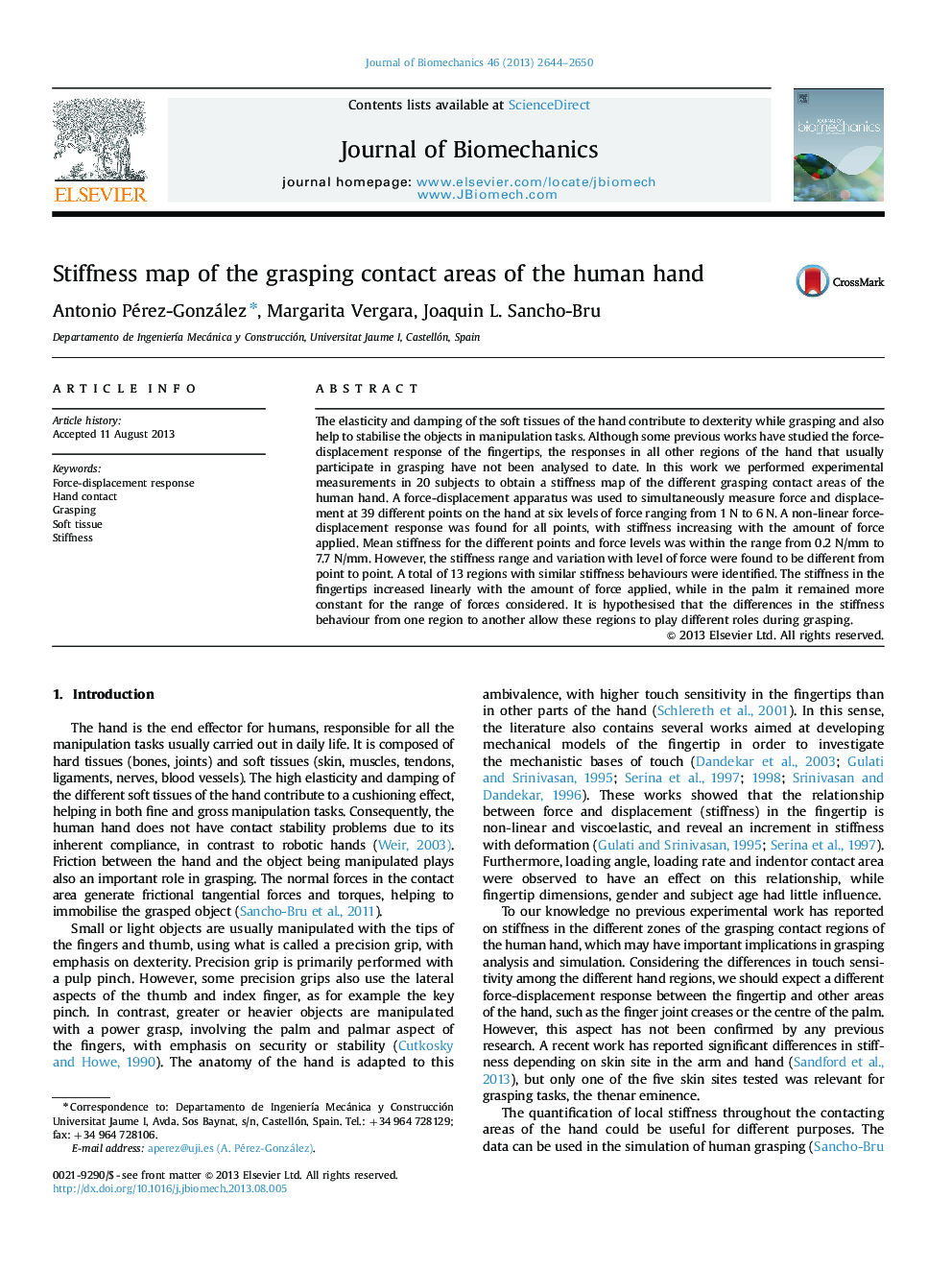| Article ID | Journal | Published Year | Pages | File Type |
|---|---|---|---|---|
| 10432320 | Journal of Biomechanics | 2013 | 7 Pages |
Abstract
The elasticity and damping of the soft tissues of the hand contribute to dexterity while grasping and also help to stabilise the objects in manipulation tasks. Although some previous works have studied the force-displacement response of the fingertips, the responses in all other regions of the hand that usually participate in grasping have not been analysed to date. In this work we performed experimental measurements in 20 subjects to obtain a stiffness map of the different grasping contact areas of the human hand. A force-displacement apparatus was used to simultaneously measure force and displacement at 39 different points on the hand at six levels of force ranging from 1Â N to 6Â N. A non-linear force-displacement response was found for all points, with stiffness increasing with the amount of force applied. Mean stiffness for the different points and force levels was within the range from 0.2Â N/mm to 7.7Â N/mm. However, the stiffness range and variation with level of force were found to be different from point to point. A total of 13 regions with similar stiffness behaviours were identified. The stiffness in the fingertips increased linearly with the amount of force applied, while in the palm it remained more constant for the range of forces considered. It is hypothesised that the differences in the stiffness behaviour from one region to another allow these regions to play different roles during grasping.
Keywords
Related Topics
Physical Sciences and Engineering
Engineering
Biomedical Engineering
Authors
Antonio Pérez-González, Margarita Vergara, Joaquin L. Sancho-Bru,
